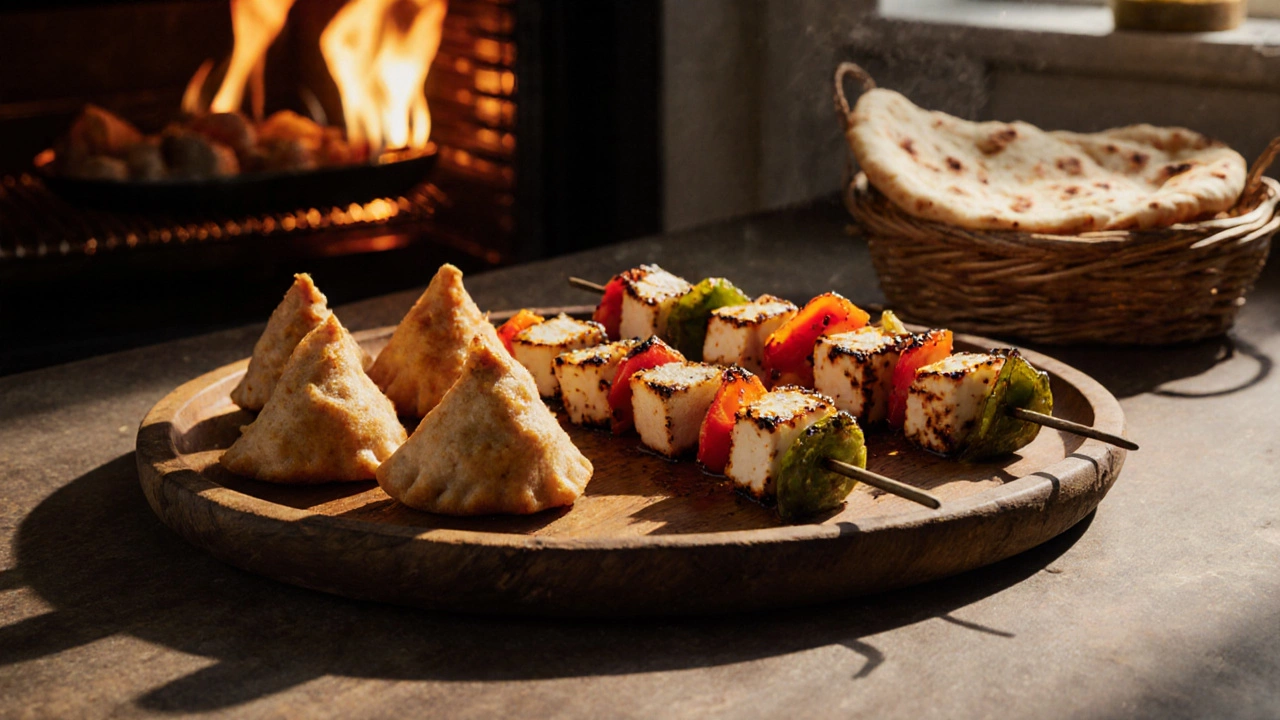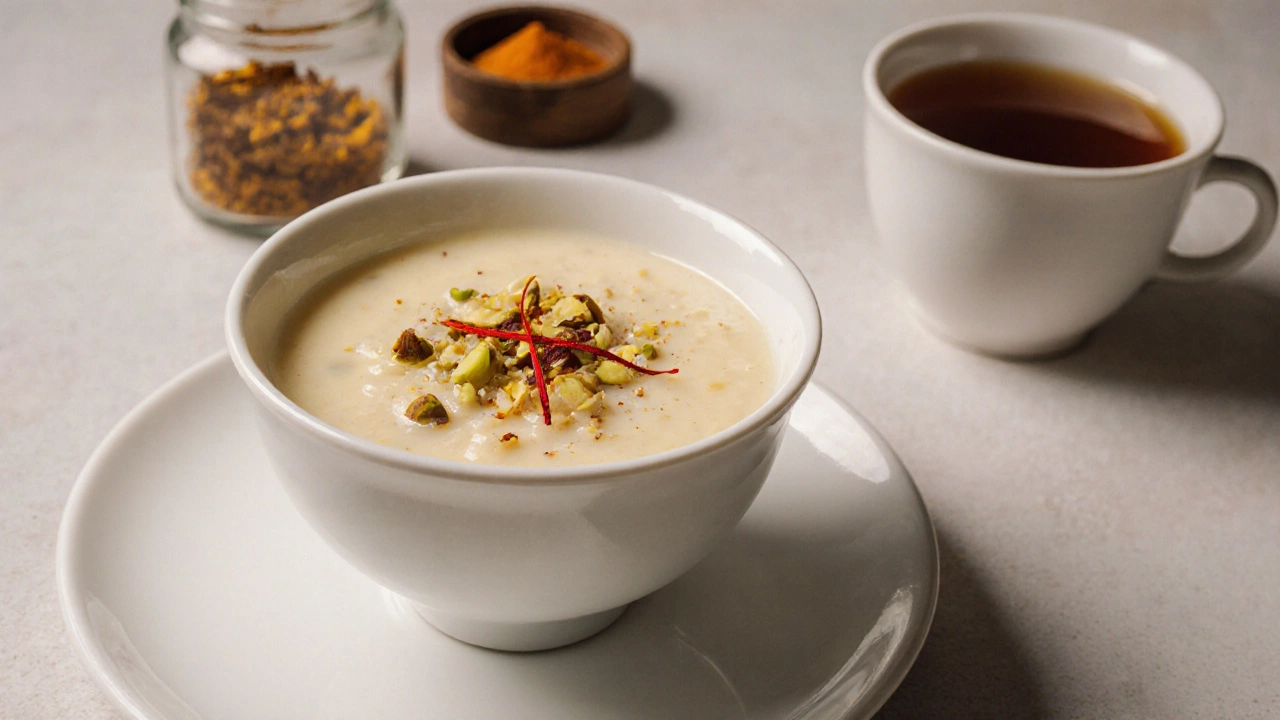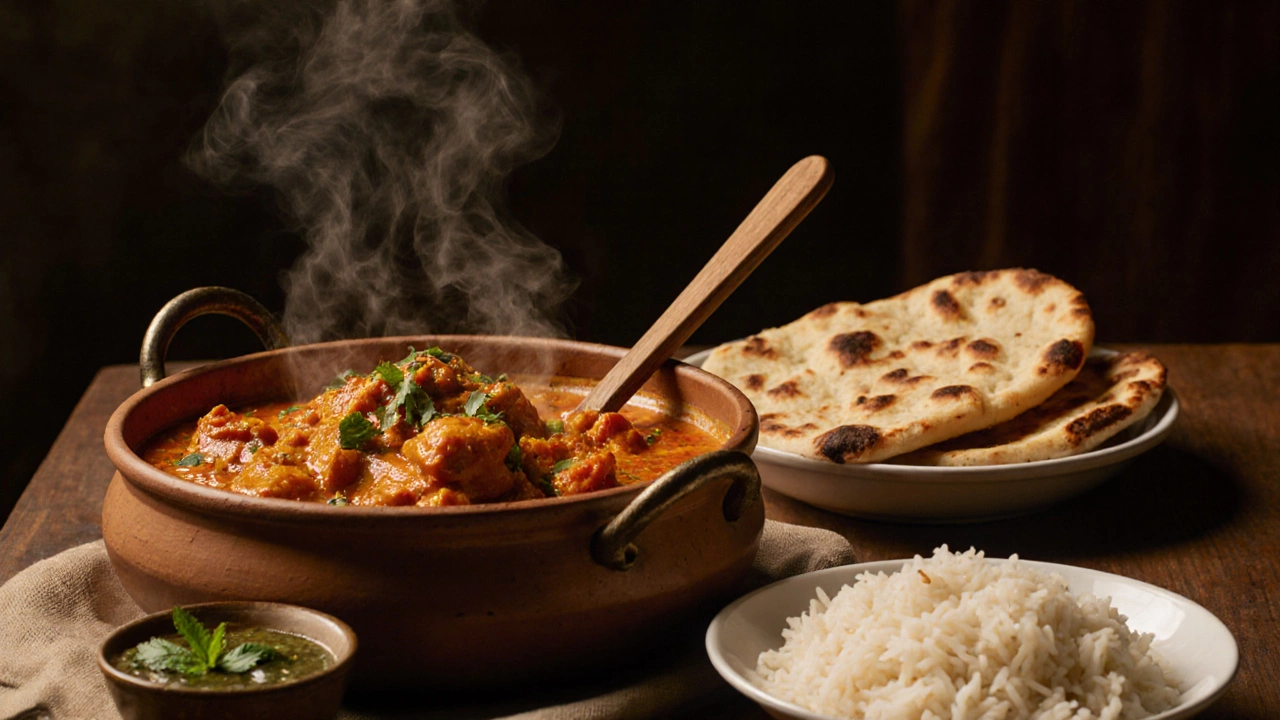If you’ve ever hosted American guests and wondered what Indian food to cook that they’ll actually love, you’re not alone. Many people assume Indian food is too spicy, too strange, or too complicated. But the truth? Most Americans adore Indian food once they try the right dishes. The key isn’t to serve the most authentic regional specialty-it’s to serve the ones that feel familiar, comforting, and delicious without overwhelming their palate.
Start with Butter Chicken
Butter chicken is the gateway drug of Indian cuisine. Creamy, mildly spiced, and rich with tomato and butter, it’s the dish that turns skeptics into fans. It’s not fiery hot. It doesn’t have strange textures. It’s tender chicken in a sauce that tastes like comfort food with a twist. Serve it with plain basmati rice or naan. That’s it. No need for chutneys or pickles on the side-at least not at first.
Most American guests have tried pizza or pasta with tomato sauce. Butter chicken feels like that, just with cumin, garam masala, and a touch of cream. You can make it in under 30 minutes using store-bought tikka masala sauce, or go the extra mile and simmer your own. Either way, it’s foolproof.
Crispy Samosas Are a No-Brainer
Think of samosas as Indian empanadas or fried turnovers. They’re crispy on the outside, warm and spiced on the inside-with potatoes, peas, and sometimes minced meat. They’re handheld, snackable, and easy to eat with your fingers. Most Americans already love fried appetizers like mozzarella sticks or spring rolls. Samosas fit right in.
You can buy frozen samosas at any Indian grocery or make your own ahead of time and freeze them. Bake or fry them right before guests arrive. Serve them with a side of mint-cilantro chutney, but don’t force it. Let them dip if they want to. The first bite is usually enough to win them over.
Paneer Tikka Is the Vegetarian Star
If you’ve got vegetarians in the group-or even just people who don’t eat much meat-paneer tikka is your secret weapon. Paneer is Indian cottage cheese, grilled on skewers with onions and bell peppers. It’s smoky, slightly charred, and marinated in yogurt and spices like turmeric and cumin. It tastes like grilled cheese on vacation.
It’s not as common in American restaurants as chicken tikka, so it feels special. And because paneer doesn’t melt or fall apart, it’s easy to eat. No one needs to figure out how to handle a messy curry. Just hand them a skewer. They’ll love it.
Naan Is the Secret Weapon
You can’t serve Indian food without bread. And naan is the easiest, most universally loved option. It’s soft, slightly chewy, and perfect for scooping up sauces. You don’t need to make it from scratch. Most supermarkets now carry fresh naan in the bakery section. Warm it up in the oven for five minutes. Brush it with garlic butter if you’re feeling fancy.
People love dipping bread. It’s universal. Whether they’re eating butter chicken, paneer tikka, or dal, naan gives them control. They can grab a piece, tear it, and use it like a spoon. It removes the fear of using chopsticks or unfamiliar utensils.

Keep the Spices Gentle, But Flavorful
American palates tend to shy away from intense heat. That doesn’t mean you skip spices-it means you choose them wisely. Garam masala, cumin, coriander, turmeric, and cardamom add depth without burning tongues. Avoid green chilies, bhut jolokia, or anything labeled "extra hot."
When in doubt, taste your curry before serving. If it makes you blink, it’s too hot for most guests. Add a splash of cream or coconut milk to mellow it. A pinch of sugar can also balance acidity. Indian food is about layers, not just heat.
Side Dishes? Keep It Simple
Don’t overload the table. Three dishes max, plus rice and bread. Too many options feel chaotic. Stick to:
- One protein: butter chicken or paneer tikka
- One lentil dish: dal tadka (lentils with tempered cumin and garlic)
- One side: plain basmati rice or jeera rice (rice with cumin seeds)
Dal tadka is mild, creamy, and full of warmth. It’s the kind of dish people come back to. Jeera rice adds a subtle nutty flavor without being overwhelming. Skip the complex biryanis or spicy pickles on the first try.
Don’t Worry About Chutneys or Pickles-Yet
Chutneys and pickles are amazing. But they’re an acquired taste. Mint chutney is bright and fresh, but its raw garlic and cilantro can surprise newcomers. Tamarind chutney is sweet and sour-like a weird candy. Pickles are salty, spicy, and fermented.
Put one small bowl of mint chutney on the table, but don’t call attention to it. Let curious guests try it. Don’t explain it. Don’t push it. Let them discover it on their own. Most will ask for more after they’ve had a few bites of chicken.
End with Rice Pudding, Not Saffron Ice Cream
For dessert, skip the elaborate kheer or gulab jamun. Go for plain rice pudding-kheer. It’s sweet, creamy, and subtly spiced with cardamom and saffron. It tastes like custard, but with a hint of something exotic. Americans love pudding. This is just a version they haven’t tried.
If you want to go a step further, sprinkle a few chopped pistachios on top. It looks pretty and adds crunch. No one needs to know it’s Indian. They’ll just think it’s delicious.

What to Avoid on First Try
There are some Indian dishes that are amazing-but not for first-time guests:
- Chana masala (chickpeas in tangy sauce-it’s strong)
- Okra curry (bhindi-it’s slimy to some)
- Fish curry (too many bones, unfamiliar flavors)
- Spicy vindaloo (it’s meant to burn)
- Dal makhani with excessive butter (it’s rich, but can feel heavy)
Save these for when your guests ask, "What else do you make?" That’s when you get to show off.
Pro Tip: Serve It Like a Buffet
Put bowls of rice, naan, curry, and dal on the table. Let guests build their own plates. It’s less intimidating than being served a full plate. They can take small portions. Try one thing. Then another. It feels safe.
Have napkins ready. And spoons. Most people don’t know how to use bread as utensils at first. Don’t assume they do. Just lay out a spoon next to each bowl.
Why This Works
Indian food isn’t hard to love. It’s just unfamiliar. When you serve dishes that are mild, comforting, and visually appealing, you remove the fear. You don’t need to explain every spice. You don’t need to lecture on regional differences. You just need to make something delicious.
People remember how food made them feel. If they laughed, took a second helping, or asked for the recipe-you’ve won.
Is Indian food always spicy?
No, Indian food isn’t always spicy. Many popular dishes like butter chicken, paneer tikka, and dal tadka are mild and flavorful without heat. Spiciness comes from chilies, which you can control. Most Indian meals focus on layered spices like cumin, coriander, and cardamom-not just heat. You can easily make any dish mild by skipping green chilies or red chili powder.
What’s the easiest Indian dish to make for beginners?
Butter chicken is the easiest. Just sauté onions, add tomato paste, stir in store-bought tikka masala sauce, add cooked chicken pieces, and simmer for 10 minutes. Serve with rice and naan. You can even use leftover grilled chicken. It takes less than 20 minutes and tastes restaurant-quality. Most beginner cooks nail it on the first try.
Can I use frozen naan?
Yes, absolutely. Frozen naan from the grocery store works perfectly. Just warm it in the oven at 350°F for 5-7 minutes, then brush it with melted butter and a pinch of garlic powder if you want to elevate it. Freshly baked isn’t necessary-what matters is that it’s warm, soft, and ready to scoop up sauce.
Do I need special spices I can’t find in the US?
No. You can find garam masala, turmeric, cumin, coriander, and cardamom in almost every major supermarket now. If not, Indian or Middle Eastern grocery stores sell them cheaply. You don’t need 15 different spices to make great Indian food. Start with five: cumin, coriander, turmeric, garam masala, and chili powder. That’s enough for butter chicken, dal, and paneer tikka.
What should I serve with Indian food besides rice and naan?
A simple cucumber salad works wonders. Slice cucumbers thin, toss with a little salt, lemon juice, and chopped mint. It’s cool, crisp, and cuts through the richness of the curry. Plain yogurt is another great side-some people like to spoon it on top. Skip complex sides like raita or pickles until your guests are ready for more.
Next Steps
Start with butter chicken and samosas. Add paneer tikka next time. Then try dal tadka. Each dish builds confidence. Before long, you’ll be making chana masala or vegetable korma without a second thought. Your guests won’t just say "That was good." They’ll ask, "When are we doing this again?"
